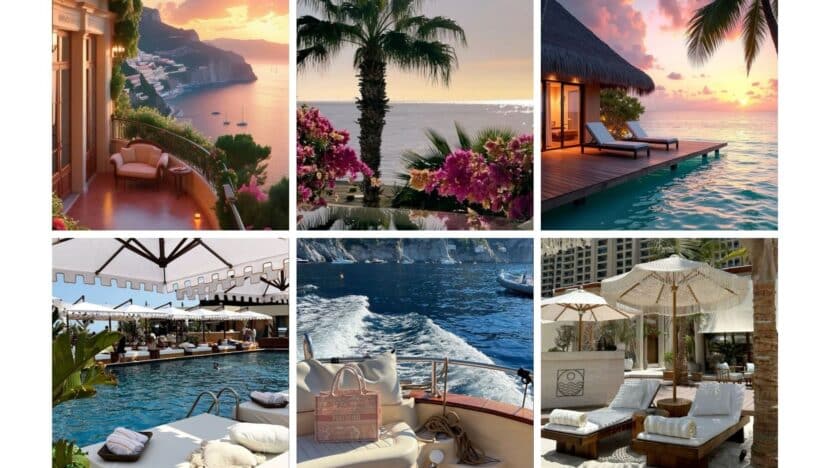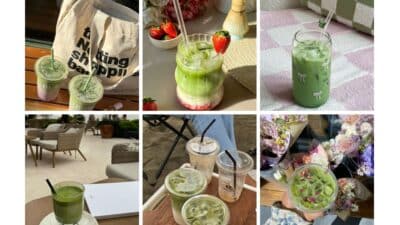When daydreaming about your next getaway, building a dreamy vacation moodboard is an inspiring way to bring your travel ideas to life. You can curate images, colors, and concepts that reflect your perfect escape, whether that’s relaxing by a serene pool, exploring vibrant city streets, or unwinding in a cozy mountain cabin. A vacation moodboard helps you clarify your ideal destination, activities, and atmosphere, making trip planning more fun and personal.
By thoughtfully selecting visuals that spark excitement, you’ll transform your vacation dreams from vague ideas into a clear, motivating vision. Using online tools and inspiration from places like Pinterest, you can find stunning pictures and creative themes that perfectly match your travel goals.
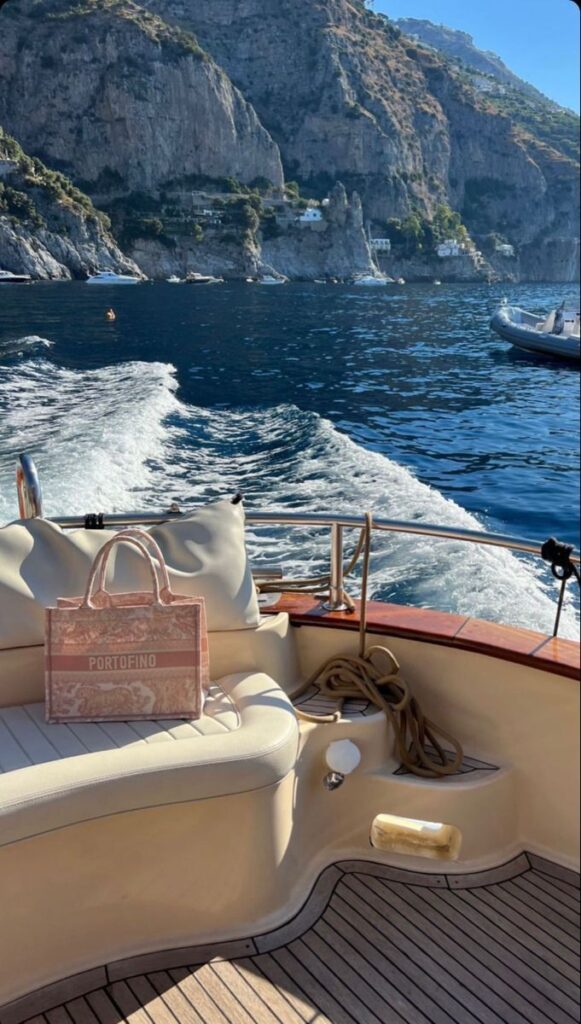
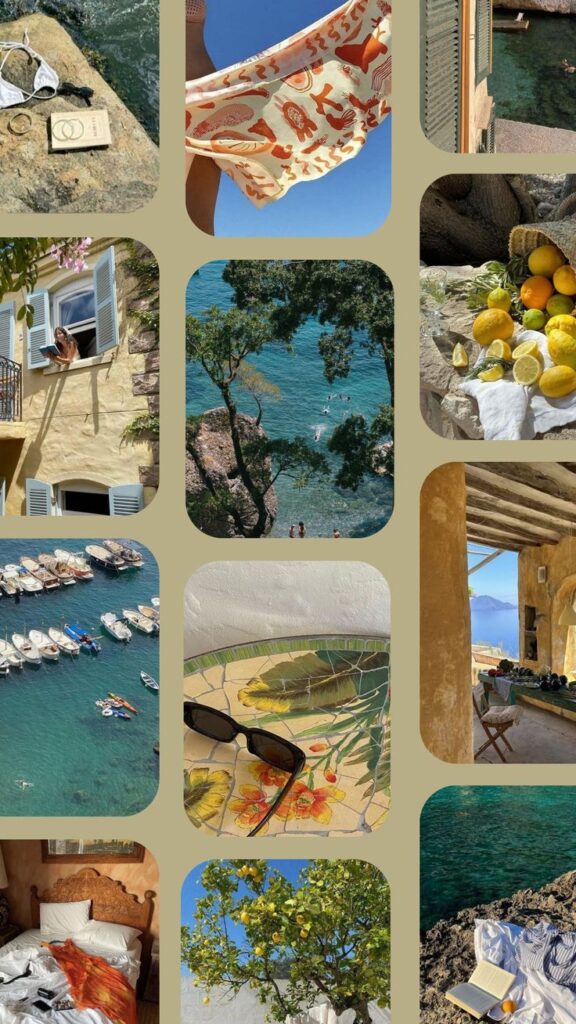
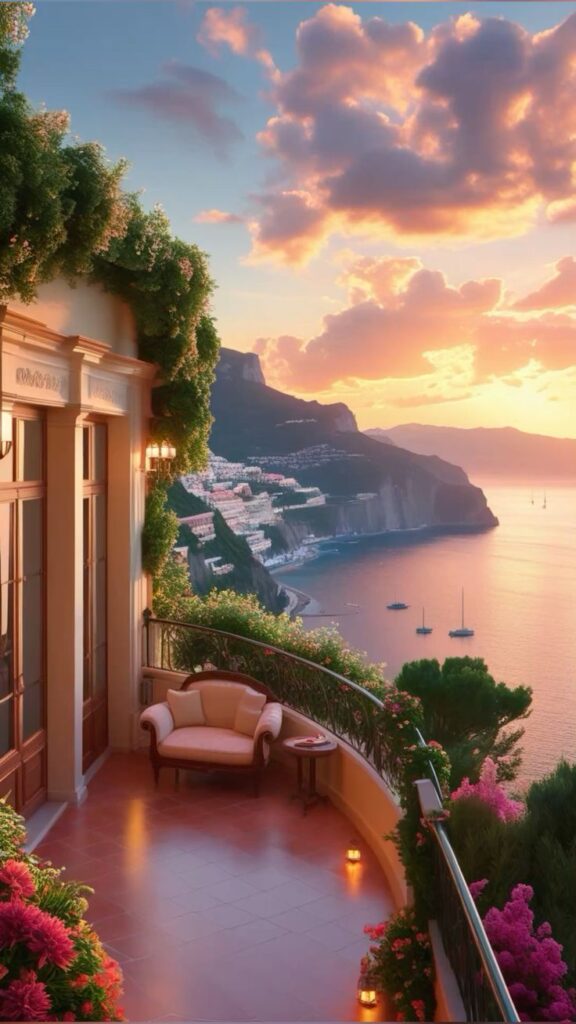
Key Takeaways
- A dreamy vacation moodboard clarifies your travel vision.
- Curate visuals that reflect your unique getaway style.
- Focus on privacy and user experience when creating your moodboard.
What Is a Dreamy Vacation Moodboard?
A dreamy vacation moodboard brings together visual elements to help you imagine and plan your ideal getaway. Collecting images, colors, and textures, you can clarify your travel vision and communicate your goals with others.
Defining a Moodboard
A mood board is a collection of images, text, colors, and design elements arranged to express a concept or style. In the context of travel, it works as an inspiration tool for organizing your dream vacation ideas visually.
Whether you use digital platforms like Pinterest or create a physical display, mood boards let you combine different sources. Some people gather stock photos from sites like Dreamstime, while others use personal travel snapshots.
They can be simple grids of photos or detailed collages that mix textures, maps, and handwritten notes. The main purpose is to create a reference point you can look back on as you plan your trip.
Key Features of Dreamy Vacation Visuals
Dreamy vacation moodboards focus on visual storytelling. They often highlight beaches, exotic destinations, cityscapes, or tranquil natural scenes. Warm colors, soothing textures, and inviting settings are common.
Here are common features you might include:
| Element | Example |
|---|---|
| Stock photos | High-res beach or mountain images |
| Travel quotes | Overlaying text like “Wander often, wonder always” |
| Color palette | Soft blues, warm yellows, or tropical greens |
| Personal touches | Your own photos or keepsakes scanned in |
Many moodboards feature a mix of dreamy images—think sunsets, resort pools, or café tables in Paris. These sparks help you focus and choose destinations that match your tastes and preferences.
Inspiration Sources
You can find inspiration for your vacation moodboard in various places. Pinterest boards are popular for browsing curated travel visuals, while websites like Dreamstime offer high-quality stock photos to fill out your board.
Travel magazines, postcards, or even friends’ photos from social media can provide ideas. For digital moodboards, screenshotting images or saving links will help you quickly build your collection.
Combining stock images, professional photography, and your own snapshots creates a personalized and aspirational feel. The more variety, the easier it is to identify what truly sparks your excitement for travel.
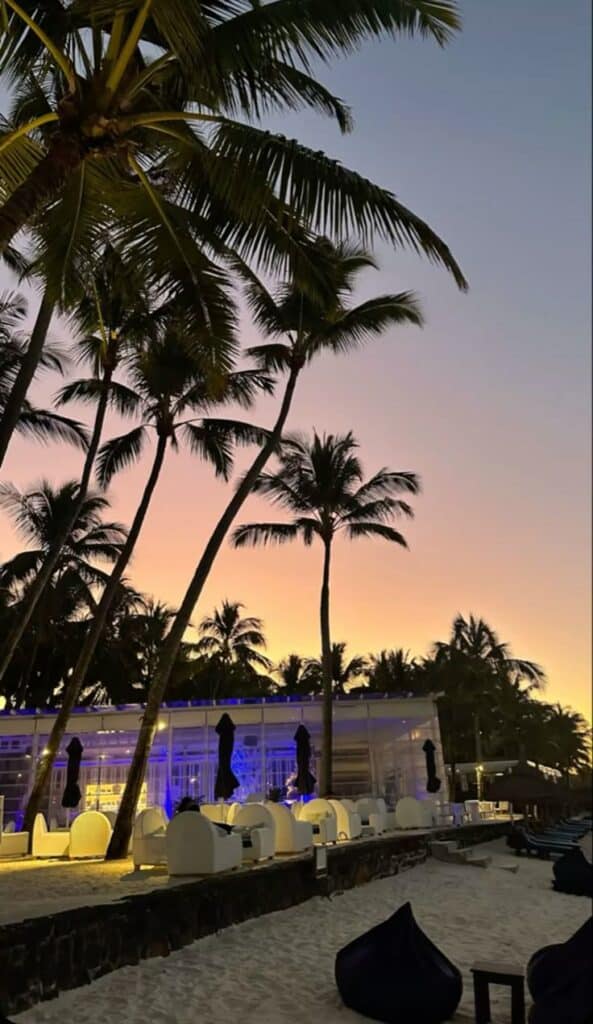


Gathering and Selecting Your Visuals
The visuals you choose set the mood and direction for your vacation inspiration. Prioritize quality, creativity, and the versatility of different types of images to best represent your travel dreams.
Choosing the Right Photos and Pictures
Start by looking for high-resolution photos that reflect your destination, activities, and desired vibe. Select images that spark a genuine feeling—think beaches with crisp blue water, markets bustling with color, or serene mountain landscapes.
Focus on clear, well-lit shots. Blurry or overly filtered pictures can distract more than they inspire. Use a mix of broad scenic views and close-ups, such as a detailed shot of local cuisine or the textures of an old street.
Try grouping images by themes:
| Theme | Example Images |
|---|---|
| Coastal Escape | Sunsets, sea, palm trees |
| City Exploration | Skylines, architecture, cafes |
| Adventure | Hiking trails, gear, wildlife |
Keep a balance of classic and unexpected photos so your moodboard stays dynamic.
Using Illustrations and Videos
Illustrations can add personality and emphasize a particular mood. You might select playful drawings of your dream city or stylized maps to show your ideal routes. Illustrations work well for customization, especially if you want to show off specific ideas or color palettes.
Videos bring travel moments to life. Adding a short clip of ocean waves, bustling streets, or glistening snowfields can create an immersive feeling. Use short, high-quality video snippets; looping GIFs or snippets under 15 seconds work best for most moodboards.
Mixing photos, illustrations, and videos keeps your moodboard lively and inspires fresh ideas. Be mindful of file sizes and formats to keep your board loading smoothly.
Image Orientation: Landscape, Square, Portrait, and Panorama
Image orientation shapes the flow and arrangement of your moodboard. Landscape images (horizontal) are ideal for scenery, giving a broad view that’s perfect for travel environments like beaches or city skylines. Square photos offer balance and symmetry, making them easy to grid and pair with other media.
Portrait images (vertical) are best for showcasing details, such as towering buildings, long roads, or portraits of locals. They help direct the viewer’s gaze upward or downward. Panorama shots are especially useful for dramatic vistas and unique perspectives. Use them sparingly to highlight standout scenes without overwhelming the viewer.
Organize your visuals by orientation for a polished look:
- Landscape: Wide scenic shots
- Square: Equally sized groupings
- Portrait: Tall subjects, people
- Panorama: Expansive landscapes, cityscapes
Varying orientation creates rhythm and lets you guide attention to your favorite spots.



Exploring Licensing and Content Types
Choosing the right images and assets for your dreamy vacation moodboard means understanding different usage rights and content origins. Some licenses are simple and broad, while others have important restrictions or offer special benefits.
Understanding Royalty-Free and Editorial Images
Royalty-free images let you pay once and use the image multiple times for a wide range of projects. You don’t have to pay per use, which is helpful when you want to use the same beach, resort, or skyline photo across social media or print.
Editorial images are different. These are often newsworthy or culturally significant photos that you can only use in non-commercial projects, such as blog posts or educational material. If your moodboard is public and you want to avoid licensing issues, check whether your images are editorial or royalty-free. Editorial images can’t be used in marketing, ads, or to sell a product.
A quick reference:
| License Type | Allowed Uses | Restrictions |
|---|---|---|
| Royalty-free | Most projects | Few, but check terms |
| Editorial | Non-commercial | No commercial use |
Exclusive and Extended Licenses
If you want unique content for your moodboard, exclusive licenses grant you the right to be the only one (or among a select few) who can use the image. This is ideal for creating a standout board that can’t be replicated by others using common stock images.
Extended licenses may be necessary if you plan to print moodboards on products for sale, like posters or planners. These licenses allow higher volumes and commercial use beyond standard royalty-free permissions.
Contributors often set their own terms, so always review what’s included before purchasing or downloading. Read the usage details and consider if exclusivity or extended rights are actually needed for your vacation moodboard goals.
Exploring AI Generated Content
AI generated content has become a popular option for moodboards, offering custom visuals without the need for a photographer or illustrator. You can create specific scenes, color palettes, or themed visuals—like a pastel beach sunrise or an abstract map of island resorts—tailored directly to your moodboard’s vibe.
However, licensing and usage rights can vary by platform or AI tool. Some AI content is truly free to use, while other images might come with restrictions or require attribution. Look for clear information about commercial use, resale, or modification.
If you’re a contributor sharing AI-generated images, make sure to label your work accurately and follow the hosting site’s policies. For personal inspiration boards, most AI platforms will suffice, but always double-check the terms before displaying anything publicly or commercially.

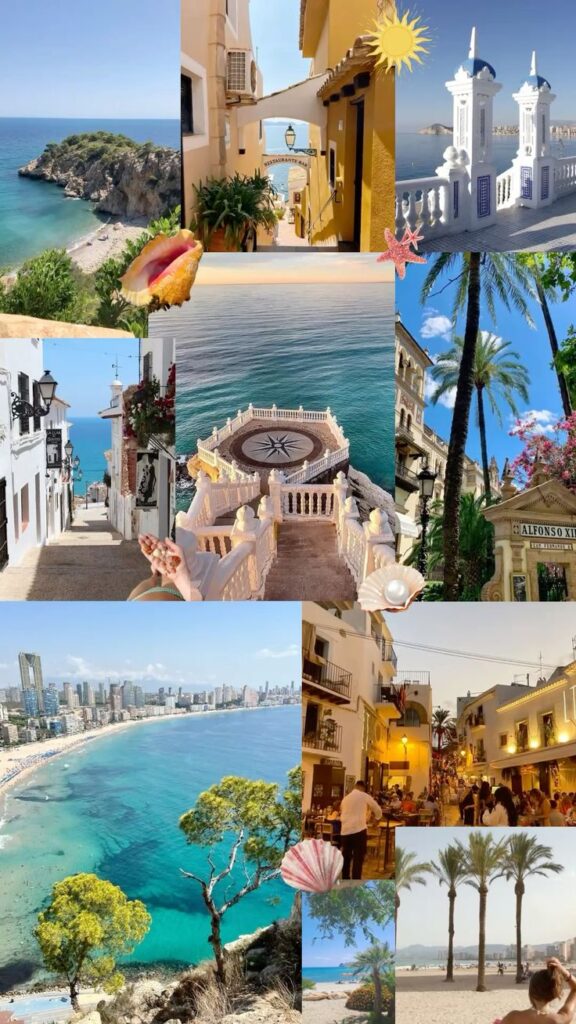

Enhancing Your Moodboard’s Appeal
Small tweaks to color, image sources, and search settings can transform your dreamy vacation moodboard. The right approach helps you tell a clear visual story while avoiding distracting or inappropriate content.
Color Composition and Visual Storytelling
A strong color palette ties your moodboard together. Pick 2-4 colors that fit your vacation vibe and repeat them throughout your images, accents, and even backgrounds. Consistent use of color ties together elements like rugs, landscapes, and decor items.
Create a story with your visuals by arranging images from top to bottom or left to right in a sequence. Start with the departure—maybe a suitcase or airport shot—then move to your destination scene, featuring the main view or activity. Include details, like textured rugs or personalized accessories, to give depth and context.
- Tip: Using complementary colors (like blue and orange for sunsets or sea and sand) draws the eye and adds contrast.
- Action: Place images so they “flow” naturally—group similar tone images, and balance bright spots.
- Measure: Step back and see if your moodboard feels cohesive and inviting.
Utilizing Filter Search Results and Safe Search Filters
When looking for images, use search filters to save time and stay focused. Adjust search settings to sort images by color, orientation, or usage rights. This lets you find the right style and avoid copyright issues, especially when collecting visuals for public or commercial projects.
Enable safe search filters to keep out unwanted or irrelevant content. This matters if you are preparing a moodboard for different audiences, including family or workplaces. Many image banks, such as Pinterest or Canva, allow you to apply custom safe search settings.
-
Filtered Search Benefits:
- Helps you avoid distracting elements.
- Ensures high quality, relevant images.
- Supports content measurement by letting you see which search terms work best for your theme.
-
Bonus: Some platforms use personalized advertising based on your searches, so filtering your results may help keep the focus on travel-inspired visuals instead of unrelated ads.
Searching, Privacy, and User Experience
Finding the right images, understanding your audience, and safeguarding privacy are all essential steps for building a perfect dreamy vacation moodboard. You have options and responsibilities to ensure your visuals are inspiring, your users feel secure, and all personal data is handled carefully.
Exploring Stock Image Platforms
When searching for images, use reputable stock photo platforms like Unsplash, Adobe Stock, or Pixabay. These sites offer a wide variety of high-resolution images covering everything from tropical beaches to city cafes.
Most platforms let you filter by color, style, or orientation. This means you can fine-tune your search data to match a specific vacation aesthetic. Pay attention to licenses and terms of use. Some images are free for personal use, while others may need attribution or require purchase for commercial uses.
To enhance your moodboard, combine photos, color swatches, textures, and even travel quotes. Lists, tables, and collections can help you organize these elements. Save your searches and favorite images by creating an account—just remember, you’ll need to share some personal data like email or a username during registration.
Optimizing Analytics and Audience Research
Understanding how users interact with your moodboard helps you improve its design and content. Many moodboard platforms offer basic analytics that show which images are most saved, viewed, or shared.
Look at audience research tools to gather information such as geolocation data, popular search terms, and engagement trends. You can find out if your users are dreaming of a European summer or a tropical escape by tracking their interactions. Some services, such as Yahoo or AOL, may use cookies or track IP addresses to offer more personalized results or recommendations.
For those building websites or blogs, analytics services can help develop your services by identifying patterns, preventing spam and abuse, and authenticating users. A table of the most visited moodboard themes each month can provide clear insight into trends.
Understanding Privacy Settings and Consent
Protecting your users’ privacy is crucial. Platforms often provide privacy settings that let you decide who can view or share your moodboard. Review and update these settings to control the sharing of personal data, cookies, and geolocation data.
Always inform visitors how their data will be used, especially when gathering precise geolocation data for analytics or audience research. Offering a simple, clear cookie policy builds trust. Seek consent when handling personal data, and explain why information like emails or IP addresses are collected—typically for security measures or to prevent spam and abuse.
Authenticate users before giving access to private boards. Let users opt out of tracking or data sharing if they choose. This approach supports both creative freedom and digital safety.


